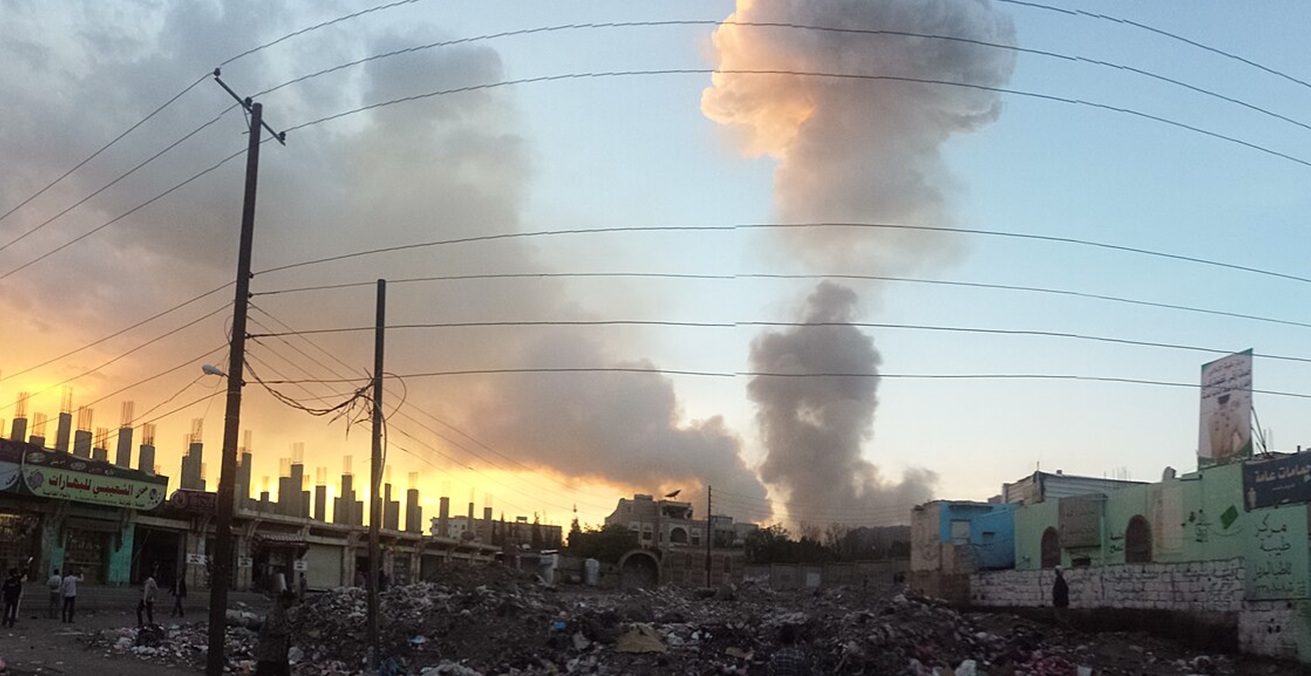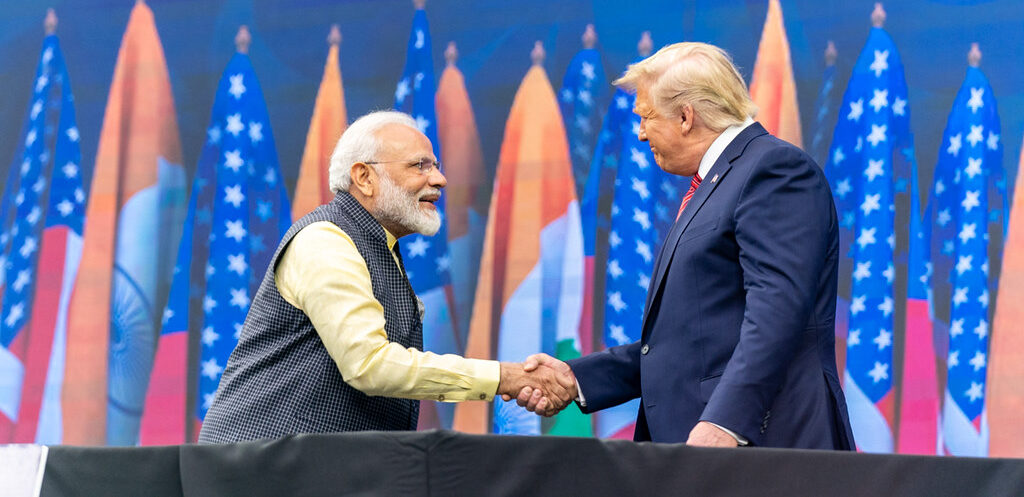US involvement in Israel’s escalating military campaign against Iran raises urgent questions about international legal norms. At stake is whether the justification of collective self-defence holds, or whether “Operation Midnight Hammer” sets a dangerous precedent for pre-emptive war.
Israel’s current military operations since 12 June 2025 have successfully targeted, degraded and/or eliminated Iran’s military leadership, air-defence capabilities, missile launch sites and production sites, command and control centres, Iranian nuclear scientists, and overground enrichment facilities. These operations were a mix of air and drone strikes from outside and from within Iran, involving Mossad and Israel Defence Forces (IDF) commandos on the ground. They resonant strongly with Ukraine’s Operation Spider’s Web against Russia’ Strategic Bomber Fleet of 1 June for their coordinated use of multi-domain tactics, precision targeting of high-value military assets, and symbolic disruption of strategic deterrence capabilities.
The IDF’s objectives are to severely weaken Iran’s abilities to attack Israel and defend its territory against further strikes. Currently, Iran is unable to defend its airspace, and the drop in the number of retaliatory launches of ballistic missiles on Israel is seen by military analysts as a sign of Israel’s success in “degrading Iran’s ballistic missile capabilities.” In addition, the IDF have targeted and destroyed air defence systems, as identified by the US as a potential risk to US air assets. Their destruction was required for the execution of US airstrikes on Iran’s nuclear facilities on Sunday and whose destruction was an explicit request and condition for the US joining the Israeli war effort.
Are US strikes against Iran legal?
The legality of the US strikes is intrinsically linked to the arguments raised by Israel in support of its attacks on Iran. These justifications are informed by the legality of Israel’s military action as well as the context of the ongoing war between Israel and Iran. Since October 2023, Israel has been subject to repeated missile and drone attacks launched at it directly from Iran and Iranian proxies in Lebanon, Syria, Iraq, and Yemen.
The use of force (as well at the threat of the use of force) in international relations is prohibited under Art 2 (4) of the UN Charter and is one of the key principles of the UN: “All Members shall refrain in their international relations from the threat or use of force against the territorial integrity or political independence of any state, or in any other manner inconsistent with the Purposes of the United Nations.” This general prohibition of the use of force has two exceptions: self-defence as “the inherent right of individual or collective self-defence if an armed attack occurs against a Member of the United Nations, until the Security Council has taken measures necessary to maintain international peace and security” and stipulated in Art 51 of the UN Charter.
This second is UN Security Council (UNSC) authorisation of the use of force under Articles 39, 41 and 43 of the UN Charter, as so called Chapter VII, Action with Respect to Threats to the Peace, Breaches of the Peace, and Acts of Aggression. Given the fact that such a UNSC resolution requires the support of the five permanent members (France, the United Kingdom, US, China, and Russia), which all have veto power, such an UNSC authorisation is extremely rare (Korea 1950, Iraq 1990 and Libya 2013).
According to the International Committee of the Red Cross, self defencein international law refers to the use of military “force to repel an attack or imminent threat of attack directed against oneself or others or a legally protected interest.” Article 51 also allows for collective self-defense, where a state acts to defend an ally facing an armed attack or imminent threat. The US could claim it is acting to protect allies like Israel, Saudi Arabia, and other countries in the region which perceive Iran’s nuclear program as an existential threat.
The imminence of the attack allows for pre-emptive or anticipatory self-defence. The question here is what qualifies as an imminent attack? International law has been using the so called Caroline test (1837) or rule to justify self defence. This is where a state can show “a necessity of self-defense, instant, overwhelming, leaving no choice of means, and no moment for deliberation.” This test has seen some modifications regarding attacks by non-state actors (like international terrorist actors such as Al Qaeda under the Bethlehem Principles). In light of modern technologies, it can be applied to the current Iran war when linked to the question of whether Iran had the capability and the political commitment to attack Israel with such a weapon. This means that one has to look at whether an attack by Iran on Israel with nuclear weapons was imminent.
Iran has enriched uranium beyond the threshold of civilian use for years. Iran has been caught out on various occasions violating its commitments under the Non-Proliferation of Nuclear Weapons (NPT) and the Joint Comprehensive Plan of Action (JCPOA). As recent as 12 June, the global nuclear watchdog’s board of governors formally declared Iran in breach of its non-proliferation obligations. Iran had enriched uranium from the agreed limit of 3.67 percent uranium to up to 83.7 percent of weapon grade uranium.
Stopping Iran from acquiring nuclear capabilities has been a longstanding principle, repeatedly stated and stressed by members of the international community. Although the US did not seek a new UNSC resolution explicitly authorising military action against Iran, a wide consensus has emerged among members of the international community that such action was justified, as evidenced by official statements made by the leaders of the UK, France, Germany, Australia, and others. The German Chancellor went as far as to say that “This is the dirty work that Israel is doing for all of us.”
Considerations come down to the immediacy element of an Iranian attack. And attack in this context can be multimodal: from nuclear armed missiles to other nontraditional weapons. Examples include the use of nuclear bomb backpacks, devices developed during the cold war to be detonated in urban centres, or “dirty bombs” that contain enriched Uranium that can cause widespread radioactive contamination. In order to assess an imminent threat, much depends on the intelligence available to both Israel and the US. Did Iran have enough nuclear weapons grade uranium ready, which is being questioned, and next, would it have used it to actually attack Israel?
If the intelligence was inaccurate then the legal justification of acting in self defence against an imminent Iranian attack with a nuclear weapon would fall away; the attack, eliminating Iran’s nuclear weapon grade uranium, would become an act of preventive self defence, which is illegal and was unsuccessfully argued by the US in justifying its 2003 Iraq invasion.
Given the legal complexities and even insecurity regarding the legality of the use of force, it might have been better if the US would have stated clearly that it was acting in support of Israel in degrading offensive capabilities in the sense of collective self defence.
Dr Sascha-Dominik (Dov) Bachmann is Professor in Law and Co-Convener National Security Hub (University of Canberra), University of Canberra, and a Research Fellow with the Security Institute for Governance and Leadership in Africa, Faculty of Military Science, Stellenbosch University. Sascha was a Fellow with NATO SHAPE ATO (Hybrid War and Lawfare Pacific) until 2025 and is an affiliated Researcher at the Risk and Crisis Centre, Mid Sweden University.
Dr Shay Keinan gained a PhD from the College of Law at the Australian National University (ANU) and is a sessional academic at the University of Canberra (UC) and ANU.
This article is published under a Creative Commons License and may be republished with attribution.





